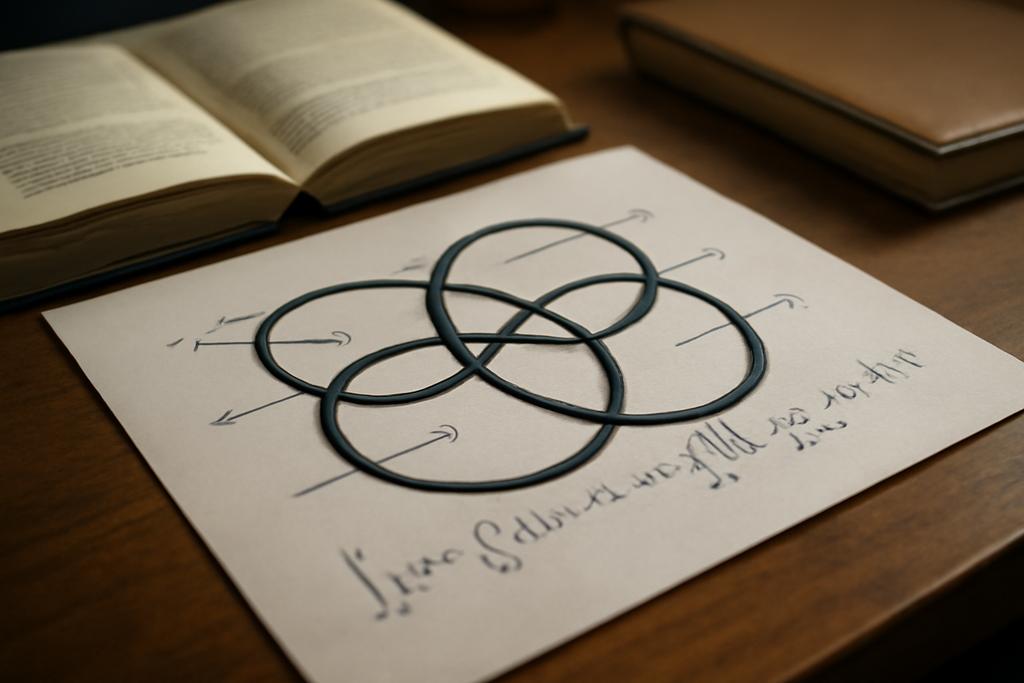A New Four-Loop Calculation: Peering Deeper into the Quantum Realm
Quantum field theories (QFTs) are the fundamental language of particle physics, describing how particles interact at the most basic level. Think of them as incredibly detailed recipes for the universe, specifying how different ingredients (particles) combine to form all the phenomena we observe. One crucial tool for understanding these recipes is the Renormalization Group Equation (RGE), which lets physicists zoom in and out of different energy scales, seeing how the basic forces and particle interactions change.
However, RGEs are notoriously difficult to calculate, especially at higher levels of precision. Imagine trying to calculate the exact trajectory of a complex system over many years — the calculations become exponentially harder the longer you look ahead. Similarly, higher-order calculations in QFTs require tackling increasingly intricate mathematical problems involving countless interactions between particles.
A recent breakthrough in this area has been achieved by Dr. Tom Steudtner of the Fakultät für Physik, TU Dortmund. His work focuses on a clever shortcut: instead of tackling each specific QFT one by one, he’s computed general “template” formulas for the four-loop RGEs applicable to a wide class of theories. This is akin to creating a master recipe that can be adapted to create many different dishes, rather than writing a separate recipe for each.
The Power of Templates
Steudtner’s approach is based on a factorization technique: separating the calculation into a generic part (the template) that applies to many QFTs and a specific part that depends on the particular theory under study. The generic part—the most challenging bit—involves a lot of spinor algebra (complicated mathematics related to the spin of particles) and loop integrations (calculating how particles interact in loops). This was conducted in a model-independent fashion, leading to the template RGEs.
Once these templates are determined, they can be reused repeatedly for different QFTs, dramatically simplifying the calculations. This is a significant leap; previously, high-precision RGEs were available only for certain simplified theories or at lower orders of precision. Steudtner’s work extends the precision to four loops for a broader class of QFTs that include fermions (particles like electrons) and scalar fields (particles like Higgs bosons).
Facing the Four-Loop Challenge
Pushing these calculations to four loops is far from trivial. The computational complexity explodes, and new mathematical challenges emerge. One of these is the “γ5-ambiguity.” The γ5 matrix in QFT calculations, related to chirality (a type of handedness) of particles, is tricky to define properly when working in dimensions other than four (a common mathematical trick called dimensional regularization). This can lead to inconsistent results unless handled carefully. Steudtner demonstrates that, fortunately, this ambiguity is absent in the calculated four-loop RGEs.
Another significant hurdle involved dimensional continuation—approaching three-dimensional QFTs (relevant for condensed matter physics) by starting in four dimensions and gradually adjusting the number of dimensions. This technique, widely used to study phase transitions, unexpectedly breaks down at the four-loop level due to differences in spinor algebra between three and four dimensions. Steudtner proposed a novel solution to this problem, effectively modifying the calculation method (what he calls the “MS3” scheme) to enable dimensional continuation at this unprecedented level of precision.
Implications for Particle Physics and Condensed Matter
Steudtner’s results have significant consequences for both particle physics and condensed matter physics. In particle physics, the improved four-loop RGEs directly impact precision calculations of fundamental interactions, particularly involving the top quark and the Higgs boson. The results provide more accurate predictions for these interactions at high energies, helping to refine our understanding of the Standard Model.
The breakthrough is also crucial for studying critical phenomena in condensed matter systems, such as phase transitions in Dirac materials. These materials exhibit unique electronic properties, and understanding their behavior at critical points requires high-precision calculations. Steudtner’s work provides essential tools to reach this precision, potentially leading to a deeper comprehension of these materials and their applications.
The Future of High-Precision QFT Calculations
Steudtner’s achievement is not just a technical triumph; it’s a foundational step forward in our ability to handle complex calculations in QFT. The template formulas offer a scalable approach to handle theories with many particles and interactions, paving the way for future progress. Imagine the implications: more precise predictions in particle physics, new insights into exotic materials, and a deeper understanding of the universe’s fundamental laws.
The work demonstrates the ongoing interplay between theoretical advancements and computational power in pushing the boundaries of our understanding of the quantum world. While these equations themselves are incredibly complex, their impact will be transformative, enhancing the precision of our scientific endeavors in multiple fields.










